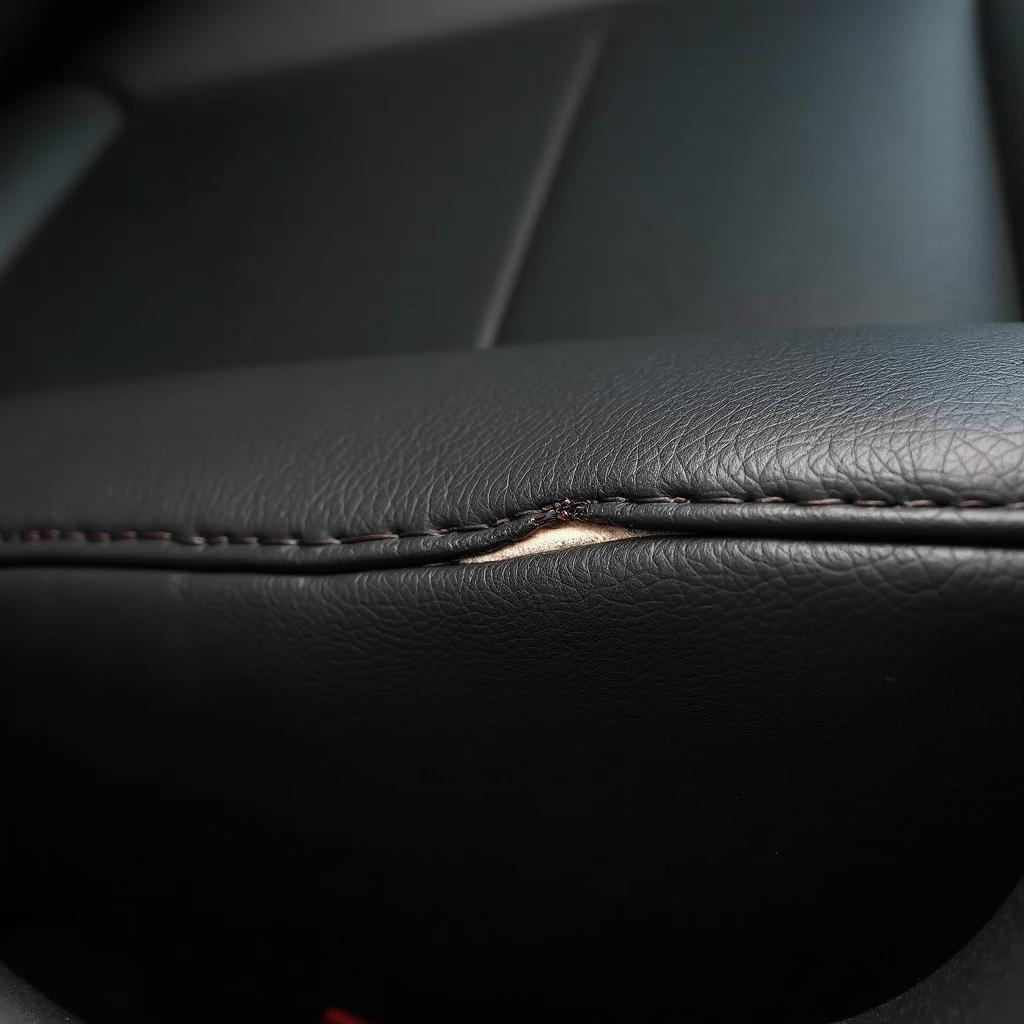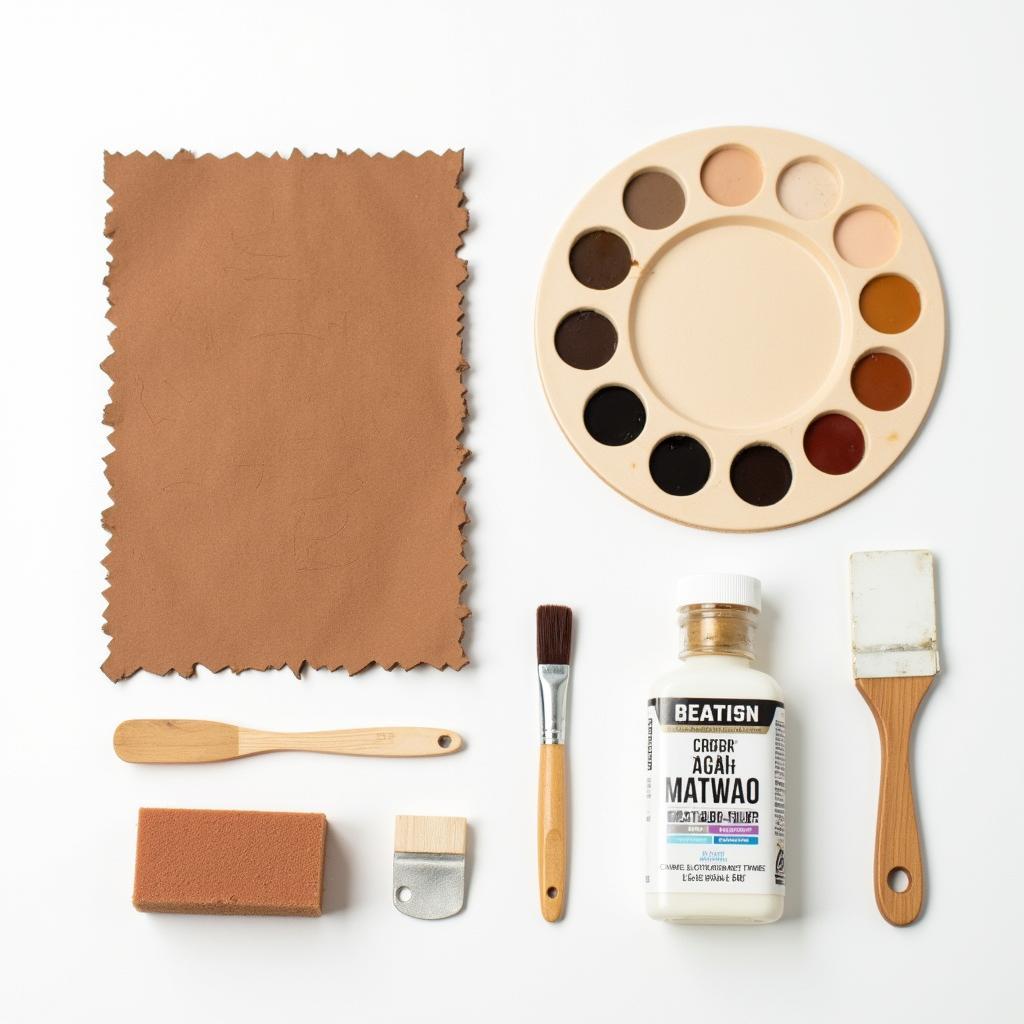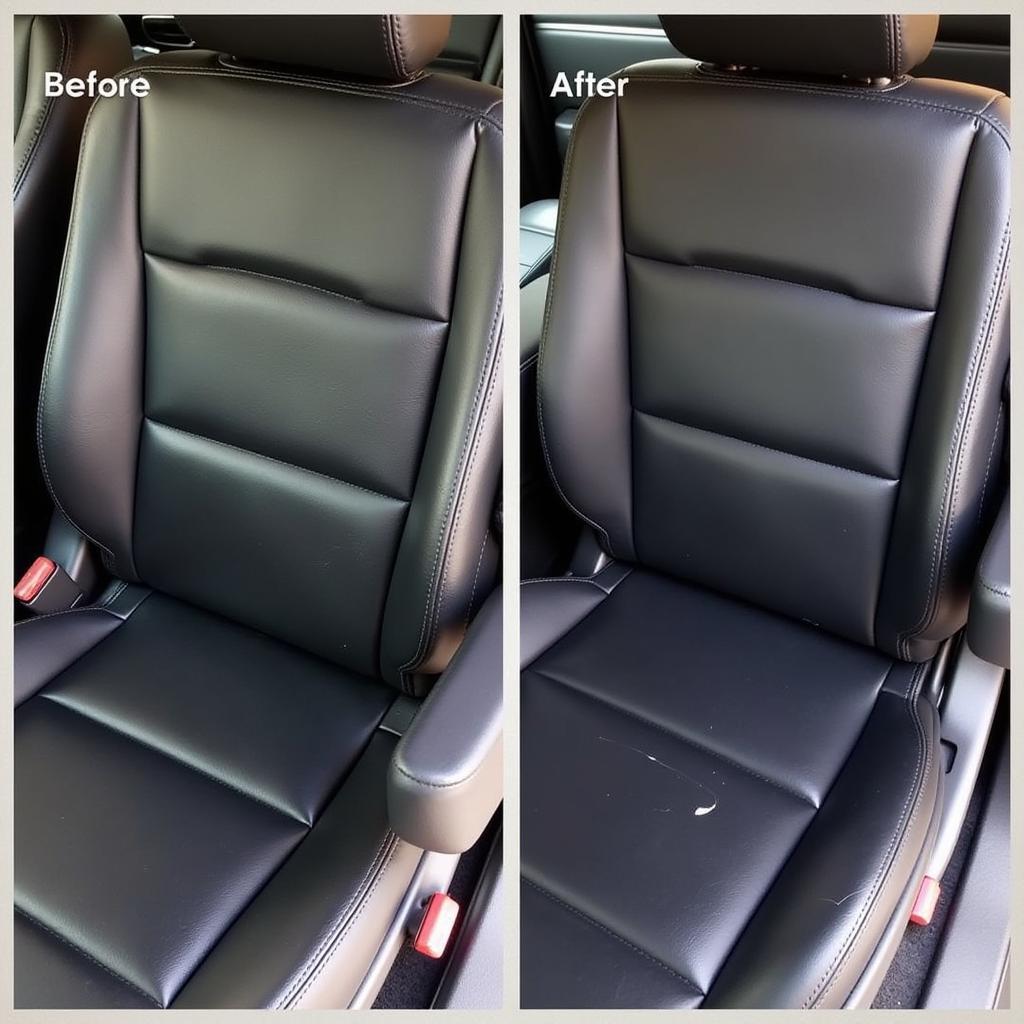
Minor Car Seat Rip
Discovering a rip or tear in your car’s leather seat can be disheartening. But before you despair, know that repairing ripped car seat leather is often possible and more affordable than a complete reupholstering. This guide will provide you with expert advice and practical steps to tackle this common issue, helping you restore your car’s interior to its former glory.
Understanding the Damage: Assessing Your Car Seat Rip
Before diving into the repair process, it’s crucial to assess the severity of the damage. A minor scratch will require a different approach than a large tear.
- Small scratches and scuffs: These surface-level imperfections can often be addressed with simple leather cleaners and conditioners.
- Minor rips and tears: These require patching and adhesive for a lasting repair.
- Large tears and extensive damage: For significant damage, consulting a professional upholsterer might be the most viable option.
 Minor Car Seat Rip
Minor Car Seat Rip
DIY Repair for Ripped Car Seat Leather: Tools and Techniques
For minor to moderate rips and tears, consider these DIY repair methods:
1. Using a Leather Repair Kit
Leather repair kits are readily available online and at auto parts stores. These kits typically contain:
- Leather filler: Used to fill in the gap created by the rip.
- Matching colorant: Helps blend the repair with your car seat’s original color.
- Adhesive: Secures the patch and filler in place.
- Application tools: These may include a spatula, sponge, and grain paper.
Pro Tip from John Miller, Automotive Upholstery Expert: “When choosing a leather repair kit, always prioritize quality. Opt for kits with a wide range of color options to ensure a seamless blend.”
 Leather Repair Kit Contents
Leather Repair Kit Contents
Step-by-step Guide:
- Clean the damaged area thoroughly using a leather cleaner.
- Use a sharp pair of scissors to trim any loose threads around the rip.
- Apply the leather filler to the rip, ensuring it fills the gap completely.
- Use the spatula to create a smooth and even surface.
- Allow the filler to dry completely.
- Apply the matching colorant to the repaired area using a sponge.
- Let the colorant dry and apply additional coats if needed.
- For a textured finish, use grain paper to emboss a leather-like pattern onto the repaired area.
2. Patching with Leather Adhesive
For larger tears, a leather patch might be necessary:
- Clean the damaged area and trim loose threads.
- Cut a leather patch slightly larger than the tear from a hidden area of the car seat or purchase matching leather online.
- Apply leather adhesive to the back of the patch and carefully position it under the tear.
- Press firmly and evenly on the patch to ensure a strong bond.
- Clean any excess adhesive and allow it to dry completely.
Note: For best results, choose a high-quality leather adhesive designed for automotive upholstery.
Preventing Future Tears: Proactive Measures
how to repair leather rip in car seat offers valuable insights on this specific repair technique. It’s a great resource to complement the steps mentioned above.
Preventing future rips in your car’s leather seats is always easier than repairing them. Follow these tips:
- Regular Cleaning and Conditioning: Use a leather cleaner and conditioner regularly to keep the leather supple and prevent cracking.
- Avoid Sharp Objects: Be mindful of what you bring into your car and avoid contact between sharp objects and the seats.
- Pet Protection: Use a seat cover to protect your leather seats from pet claws and fur.
Conclusion
Repairing ripped car seat leather doesn’t have to be a daunting task. By assessing the damage, using the right techniques and materials, you can often restore your car’s interior yourself. Remember, how to repair leather car seats rip offers detailed guidance on this topic, providing a step-by-step approach for optimal results. However, if you’re dealing with extensive damage, seeking professional help is always a wise choice. By proactively caring for your leather car seats, you can maintain their luxurious look and feel for years to come.
FAQs: Ripped Car Seat Leather Repair
1. Can I use superglue to repair a leather car seat rip?
We strongly advise against using superglue as it’s not designed for leather and can cause further damage, making professional repair more difficult.
2. How long does it take for leather repair filler to dry?
Drying times vary depending on the product used. Always refer to the manufacturer’s instructions for specific drying times.
3. Where can I find matching leather for my car seat repair?
Online retailers specializing in automotive upholstery, local leather suppliers, or even a junkyard (for older car models) can be good sources.
4. Is it worth repairing a ripped car seat, or should I just replace it?
Repairing a rip is often significantly cheaper than replacing the entire seat. Assess the damage and cost comparison to make an informed decision.
5. Can I prevent future rips in my leather car seats?
While not entirely avoidable, regular cleaning, conditioning, and using protective measures like seat covers can significantly reduce the risk of rips and tears.
Common Scenarios:
- Rips caused by sharp objects: These often have clean edges and are easier to repair using a leather repair kit.
- Tears from wear and tear: These may be larger, require patching, and might benefit from a professional’s expertise.
- Cat scratches on leather: These require meticulous cleaning and the use of a leather filler to restore the surface.
For more insights and solutions tailored to your specific situation, explore our other informative articles like how repair ripped leather car seat and how can u repair ripped leather car seats on CarRepairOnline.
Need Expert Assistance?
Contact us via WhatsApp: +1(641)206-8880 or Email: [email protected]. Our dedicated team is available 24/7 to provide personalized guidance and address your car repair queries.



